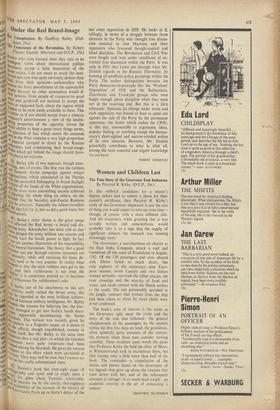Women and Children Last
IF, like redbrick candidates for a master's degree, sailors had to submit a thesis for their master's certificate, then Percival R. Kirby'3 study of the Grosvenor shipwreck is just the sort of thing you would expect to turn up some time— though, of course, with a more diffident title. And the examiners, while granting that it was soundly written and conscientious, would probably take it as a sign that the supply of significant subjects for research was running alarmingly short.
The Grosvenor, a merchantman on charter to the East India Company, struck a reef and foundered off the coast of Pondoland in August, 1782. Of the 138 passengers and crew aboard only fifteen failed to reach shore; but only eighteen of the castaways—nine Euro- pean seamen, seven Lascars and two Indian women servants—survived the tribal attacks, the river crossings and the scarcity of food and water, and made contact with the Dutch settlers to the south. The rest presumably perished in the jungle; rumours that women from the ship had been taken as wives by local chiefs were never confirmed.
The book's core of interest is the scene as the Grosvenor split upon the rocks and the story of the trek that followed : the general abandonment of the passengers by the seamen within the first few days on land; the gratuitous. often spitefully petty torments of the natives; the moment when three men consider turning cannibal. These incidents seem worth the pains that Professor Kirby (he held the chair of 1141.13ie at Witwatersrand) took to reconstruct them; but they occupy only a little more than half of the book. The remainder—a compilation of the stories and poems based on the Grosvenor of the legends that grew up about the treasure that
went down with her, and of the subsequent attempts at salvage—is so much dead weight : an academic eXercise in the art of exhausting a subject.
GEOFFREY NICHOLSON






































 Previous page
Previous page